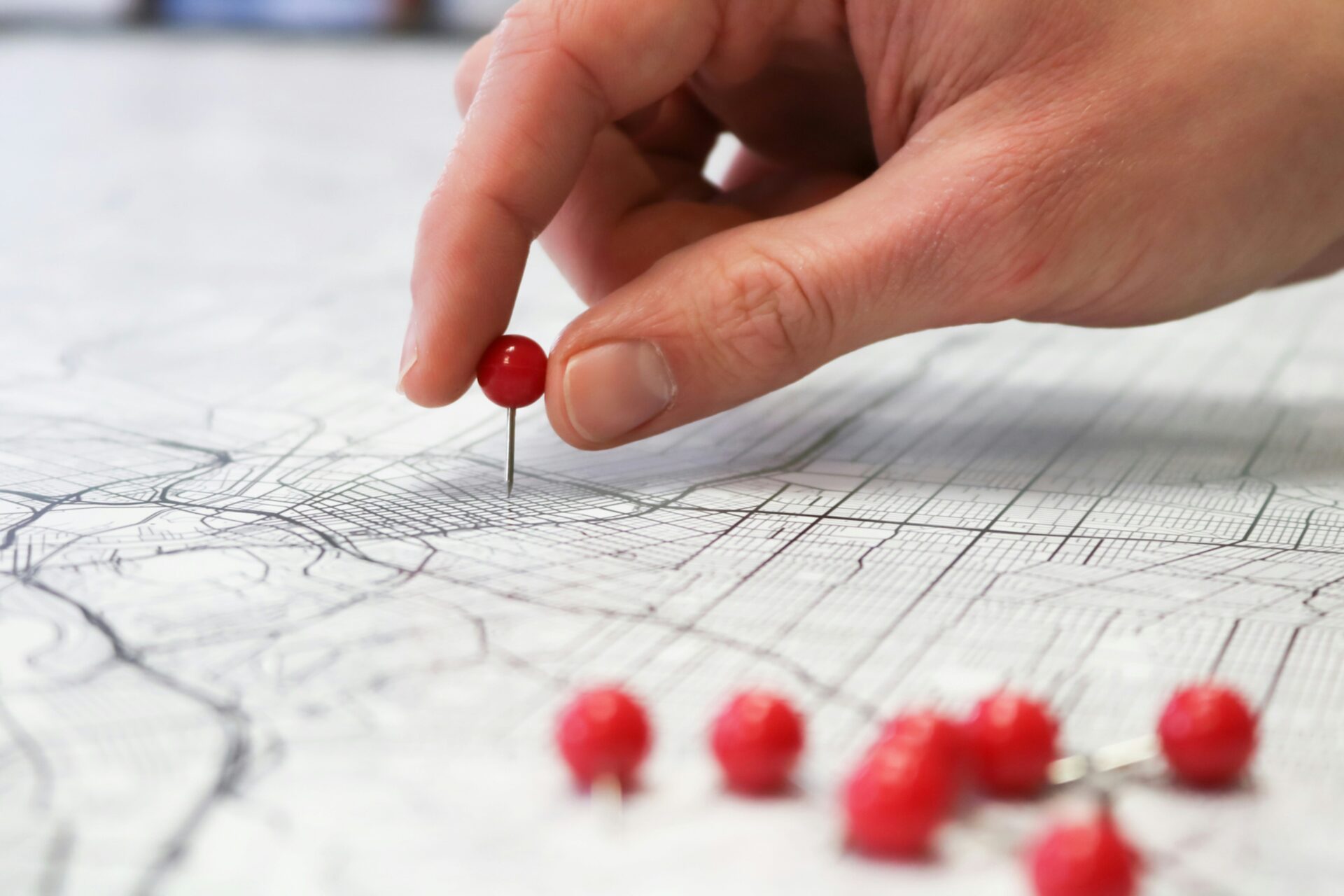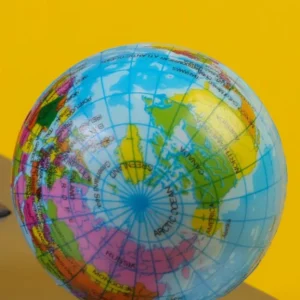If you have ever wondered “what is human geography?” or considered studying the discipline, you’re about to discover a key branch of geography focused on the complex and dynamic ways humans interact with the Earth’s surface. It’s a branch of geography that focuses on how societies, cultures, and economies shape and are shaped by the places where people live, work, and move.
Rather than simply mapping physical features, human geography seeks to uncover the reasons behind where and why things happen, investigating the “how,” “why,” and “with what consequences” of human behaviour.
At the heart of what is human geography are questions such as:
- Why do people cluster in certain places and not others?
- How do cultural identities manifest themselves in landscapes?
- What economic factors influence the arrangement of industries and services?
- How are political boundaries and conflicts influenced by geography?
So, what is human geography? It is a discipline marked by diverse approaches, combining elements from the social sciences while maintaining a strong spatial perspective unique to geography. It allows students to investigate how human societies organise themselves, how identities and cultures interact with places, and how globalisation reshapes local realities.
Geography students at school, university, and college can usually choose to focus on human geography rather than physical geography if they choose, covering only subtopics in this area. These subtopics range from population studies and migration patterns to urban planning, cultural landscapes, political organisation, and economic development.
Let’s dive into some of what those subtopics are and see how they open up different windows on the relationship between people and space.
Distinction from Physical Geography
Before delving further, it is helpful to clarify: what is human geography in relation to physical geography? The broader field of geography is often split into these two branches – physical and human.
Physical geography explores natural features, including climates, soils, and ecosystems. It is the study of the Earth’s landscapes and processes in the absence of human intervention.
But when you ask, “what is human geography?” you are shifting focus to humanity’s role. Human geography investigates urban and rural settlement, social and cultural structures, linguistic and religious patterns, economic organisation, and political boundaries. In summary:
- Physical geography considers the natural world.
- Check out our article “What is physical geography?” to learn more.
- Human geography looks at the patterns and processes that humans imprint onto that world.
When Worlds Collide
When physical and human geography overlap, they create important interdisciplinary fields that examine how natural processes and human activities continuously influence one another. This crossover is especially apparent in areas like environmental geography and the study of natural hazards. For instance, human activities such as deforestation, urban expansion, or agriculture can significantly alter physical systems by changing climate patterns, water cycles, and ecosystem dynamics.
Check out our high school summer programmes in Environment & Sustainability.
Conversely, natural events like floods, earthquakes, or volcanic eruptions can affect where and how people live, how societies organise themselves, or how infrastructure is built. Such interconnections are evident in the study of climate change, where human-generated greenhouse gas emissions are altering physical systems, but understanding the consequences and planning societal adaptation relies on insights from both human and physical geography.
Core Themes in Human Geography
Understanding human geography involves exploring its core themes, each examining a different aspect of how people interact with places and spaces.
1. Population and Migration Patterns
A major question driving human geography relates to where people live, how populations grow or shrink, and why people move. Geographers examine:
- Population density: Why some regions host megacities while others remain sparsely populated.
- Migration patterns: Both voluntary and forced movements driven by economic, political, environmental, and social factors.
- Demographic trends: Age and gender composition, birth and death rates, and how these affect societies.
By examining these patterns, students of human geography can understand not just the “where,” but also the “why” and “how” behind human distribution and movement.
2. Cultural Landscapes and Identity
What is human geography’s perspective on culture? It sees cultural landscapes as the product of human values, meanings, and memories. Language, religion, architecture, art, and heritage are all expressed in space. Topics explored include:
- How cultural traditions shape the look and feel of villages, cities, and regions.
- The spread and transformation of cultural identities, especially in the context of globalisation and migration.
- How places attain symbolic or spiritual significance.
In light of the deeply intertwined relationship between culture and place, those wondering ‘What is human geography?’ quickly realise that there is a significant overlap with other disciplines like sociology, anthropology, political science, and environmental studies, since all of them are concerned with how human activity shapes, and is shaped by, the spaces and places we inhabit.
3. Economic Systems and Development
It’s also essential to consider how geography affects economies. This includes:
- The placement and growth of industries and services.
- Regional inequalities and the causes of wealth and poverty.
- Globalisation and its role in changing patterns of production, trade, and consumption.
Fertile river valleys, for instance, have long provided the foundations for thriving agricultural societies, while access to coastlines has enabled trade and cultural exchange to flourish. Mountain ranges, deserts, and harsh climates can impose limits on connectivity and productivity, but they can also foster unique adaptations and resource use. In the modern era, the same principles still apply: cities situated at crossroads of transportation routes often develop into financial or industrial hubs, while regions rich in natural resources shape global markets and geopolitics.
Economic geography – a core subfield – does not just ask “where are resources or factories located?” but “why are they there, who benefits, and what inequalities result?”
4. Urbanisation and Spatial Organisation
Directly related to the geography of economic systems is the question: what is human geography’s take on the growth of cities? Urban geography, an important branch, examines:
- The emergence and structure of cities, from central business districts to suburban sprawl.
- Housing, infrastructure, transportation, and planning.
- Issues such as segregation, gentrification, and urban sustainability.
As more than half the world’s population lives in cities, understanding urbanisation is pivotal to grasping human geography. Recent topics include the rapid growth of megacities and the strain this places on housing, transport, and infrastructure; the rise of smart cities that use technology to manage resources and services; and the social challenges of inequality, gentrification, and segregation within urban environments.
5. Political Geography
What is human geography’s role in the study of politics? Political geography is all about the spatial dimensions of governance, conflict, and identity:
- Creation, maintenance, and contestation of boundaries and borders.
- The geographic factors that influence political processes, alliances, and conflicts.
- The impacts of nationalism and regional movements.
Recent examples of things you could study here include how climate change is reshaping disputes over Arctic sovereignty, the role of natural resources in driving territorial tensions in the South China Sea, or how migration flows influence debates around borders in Europe and North America.
Check out our high school summer programmes in International Relations.
Join the Immerse Education 2025 Essay Competition
Follow the instructions to write and submit your best essay for a chance to be awarded a 100% scholarship.

Subfields and Specialisations in Human Geography
Beyond the core themes, students can often choose to specialise in more focused areas of human geography. For example, you might study health geography, which explores how location affects access to healthcare and the spread of disease, or electoral geography, which examines how voting patterns and political representation vary across space. Others dive into transport geography, analysing mobility and networks, or tourism geography, looking at how cultural heritage and landscapes are shaped by travel. There are also applied fields such as planning and policy geography, which consider how spatial knowledge informs urban development, environmental management, and community resilience.
Whichever area a geographer chooses to focus on, the way they investigate it is just as important as the subject itself. Specific methods and approaches form the backbone of human geography, providing the techniques that turn broad questions into meaningful insights.
Methods and Approaches in Human Geography
So, what is human geography in practice? It is both a conceptual science and an applied one, which means that the way geographers study human relationships with space is just as important as the questions themselves. To develop this understanding, geographers use methods such as:
- Fieldwork and direct observation: From interviews and surveys to community engagement, these provide first-hand insights into how people experience and shape places.
- Spatial analysis and Geographic Information Systems (GIS): Tools that map and visualise data across scales, revealing hidden patterns and relationships in human activity.
- Statistical analysis: The use of demographic, economic, and social indicators to identify trends, measure inequalities, and model change.
- Case studies: Focused investigations of specific locations, helping geographers compare the unique and the general in human experiences of space.
Together, these approaches are more than just techniques for gathering data – they are the foundation of how human geography produces knowledge. They allow the discipline to move from broad ideas about people and place to evidence‑based insights that explain, compare, and connect human experiences across the globe.
Importance and Applications of Human Geography
When people ask “what is human geography?”, one of the clearest answers is found in its usefulness for solving real‑world problems.
Informing Public Policy
Insights from human geography shape urban planning, disaster management, public health, and resource allocation. By mapping populations and analysing spatial data, governments and organisations can make more effective, evidence‑based decisions.
Addressing Societal Challenges
The discipline equips us to respond to pressing global issues:
- Climate change adaptation: Identifying vulnerable populations and planning resilient infrastructures.
- Food security: Analysing access, production, and distribution of food across regions.
- Migration and integration: Exploring the complex causes and consequences of human movement.
Enhancing Cultural Awareness and Global Citizenship
Studying human geography builds empathy and global understanding. It helps people appreciate diversity, respond to intercultural tensions, and become more thoughtful global citizens.
Supporting Business and Economic Development
Businesses apply geographic insights to understand markets, optimise distribution networks, and analyse consumer behaviour. Site selection, logistics, and marketing strategies all rely on spatial analysis at local, national, and global scales.
Taken together, these applications show that human geography has both a theoretical and practical side – it’s a discipline that connects knowledge with action in the world.
Conclusion: The Relevance of Human Geography Today
Ultimately, when you ask “what is human geography?” you are opening the door to a field fundamental to understanding our world. Human geography is more than the study of where humans are – it is the study of how, why, and with what consequences people occupy and transform the planet.
From tracing migration flows to understanding city growth, and from unveiling the geopolitics behind borders to exploring how culture shapes place, human geography equips us for the challenges and opportunities of the 21st century. As societies confront urgent global issues, the insights provided by human geography are not just useful – they are indispensable.
Those asking “what is human geography?” and those who eventually study the discipline are deepening our understanding of the living, dynamic relationship between place, people, and the processes that connect them across the surface of the Earth.




















